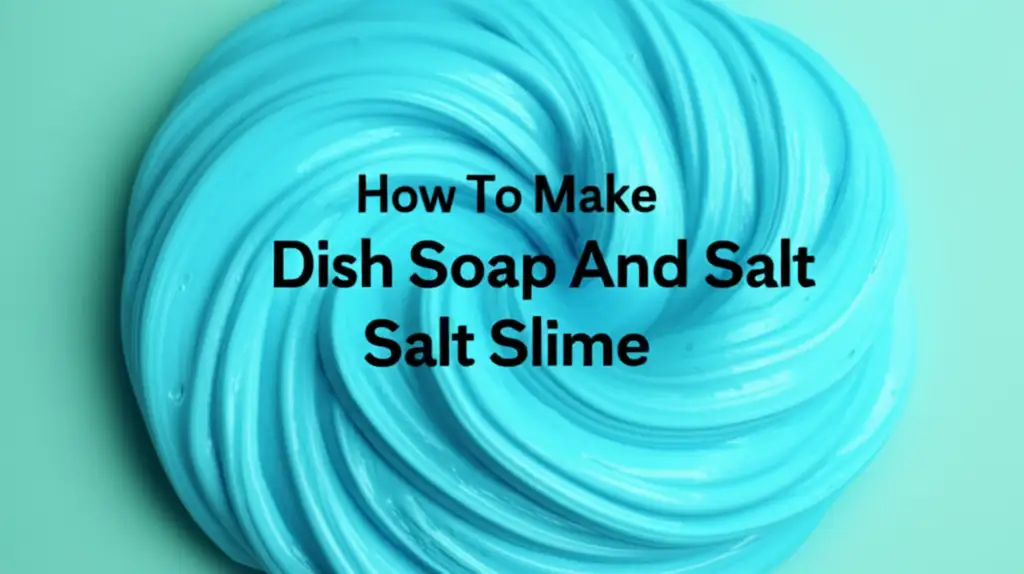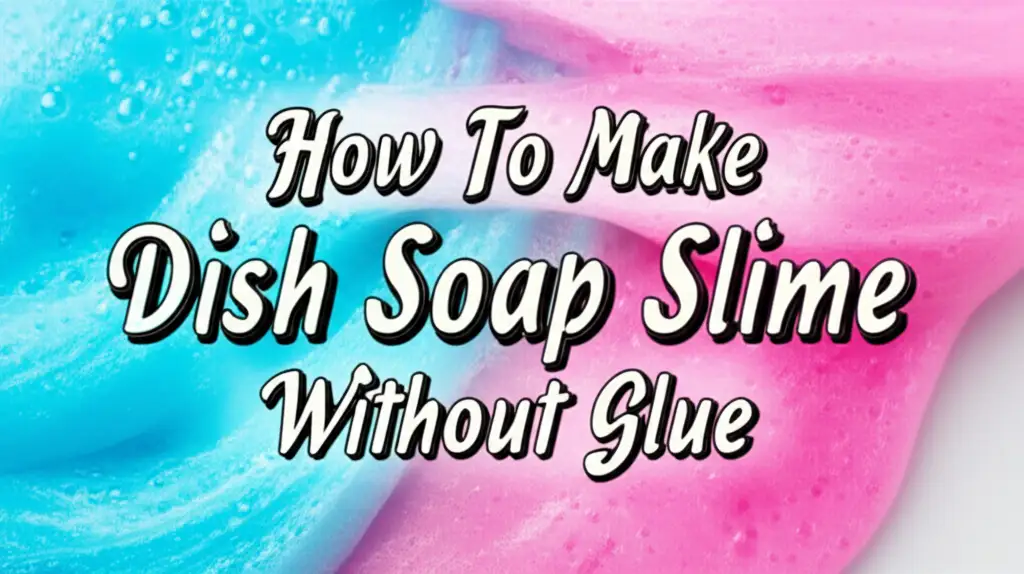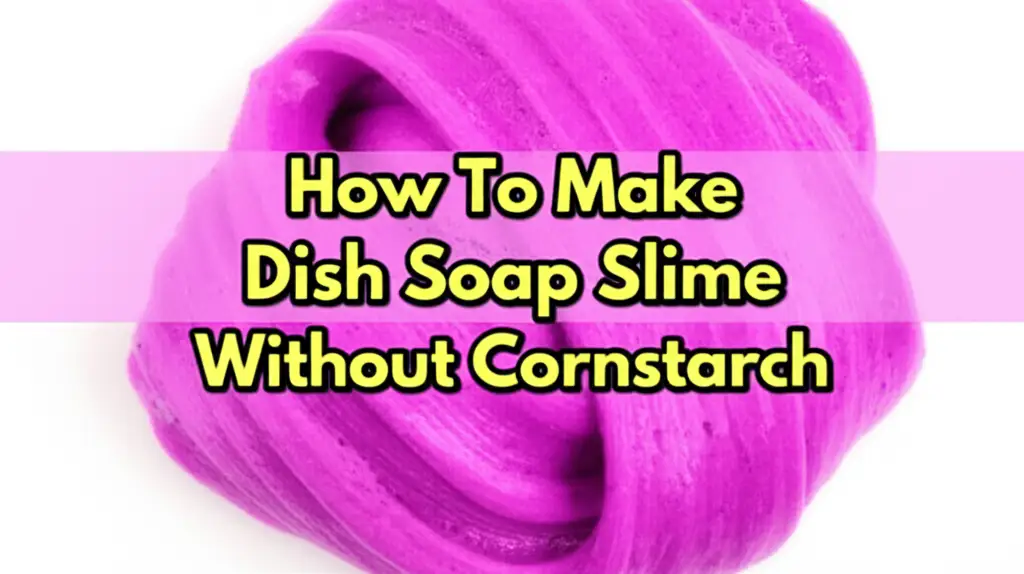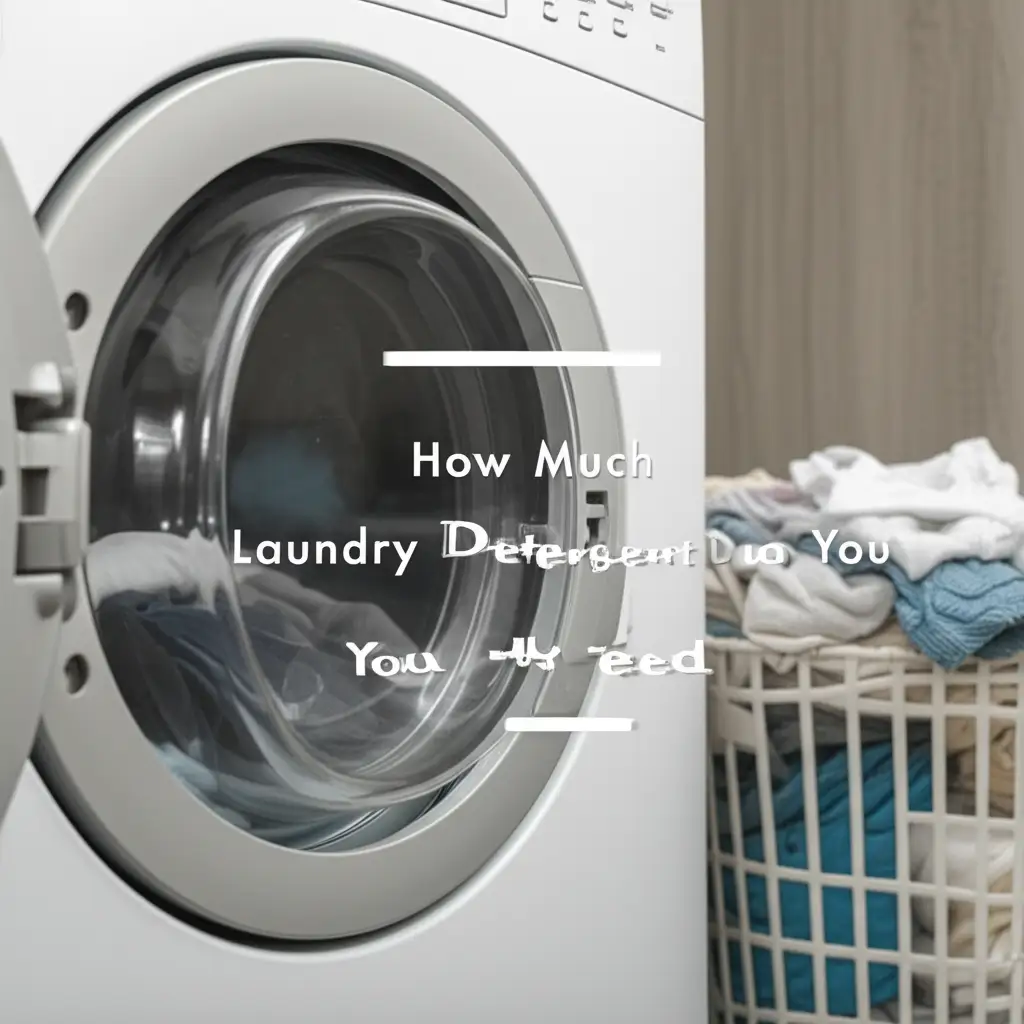· Todd Martin · DIY Crafts · 19 min read
Can U Use Laundry Detergent To Activate Slime
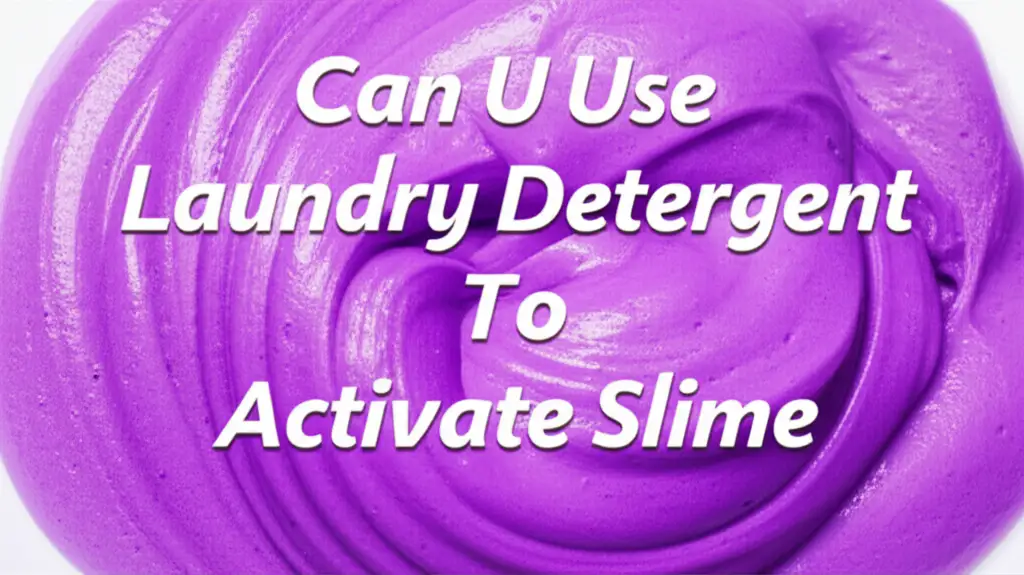
Activating Slime: Can You Use Laundry Detergent?
Do you remember the joy of making slime as a child? Or maybe you are exploring this fun activity with your own kids now. Slime is a beloved sensory toy, and its creation often involves a special ingredient: an activator. Many people wonder if they can use laundry detergent to activate slime. It is a common household item, so it seems like a practical choice. This article will explain how laundry detergent works as a slime activator. We will also cover which types of detergent are best, step-by-step instructions, and important safety tips. Get ready to explore the exciting world of homemade slime!
Takeaway
Using laundry detergent as a slime activator is possible and popular. Here is what you need to know:
- Yes, you can use laundry detergent to activate slime, but not all detergents work.
- Look for detergents containing sodium borate or borax derivatives.
- Always use a small amount of detergent and add it slowly.
- Supervise children closely when making slime with laundry detergent.
- Store slime in an airtight container to keep it fresh.
Can you use laundry detergent to activate slime?
Yes, you can use laundry detergent to activate slime. Many laundry detergents contain chemicals called borates, which react with the glue to create the stretchy slime texture. This makes laundry detergent a popular and convenient slime activator for many DIY enthusiasts.
Understanding Slime Activation: How Does Laundry Detergent Work?
Making slime involves a fascinating chemical reaction. You start with a base, typically a PVA (polyvinyl alcohol) glue. This glue contains long chains of molecules. For these chains to become slime, they need to link together.
Laundry detergent acts as a cross-linking agent. It contains ingredients like sodium borate or boric acid. When these borate ions mix with the glue, they connect the individual glue molecules. This connection creates a flexible, stretchy network. The result is the sticky, pliable substance we know as slime.
The Role of Borate Ions
Borate ions are the key players in this process. They act like tiny bridges. Imagine the glue molecules are like separate strands of spaghetti. Borate ions come in and link these strands together. This linking process is what transforms a liquid glue into a solid, yet flexible, slime.
Not all laundry detergents contain these specific borate compounds. This is why some detergents work well for slime and others do not. You need a detergent with the right chemical makeup for successful slime activation. Without these specific ions, the glue will remain a sticky liquid.
The Chemical Reaction in Simple Terms
When you mix glue and certain laundry detergents, a simple chemical reaction occurs. The borate ions from the detergent grab onto the polyvinyl acetate molecules in the glue. They form new, weak bonds between these long chains. These new bonds are temporary and allow the slime to stretch and move.
It is like building a flexible net. The detergent creates the knots that hold the net together. This chemical transformation is why your slime becomes stretchy and less sticky. Understanding this process helps you choose the right detergent and adjust your recipe.
Selecting the Right Laundry Detergent for Slime Success
Not every bottle of laundry detergent will turn your glue into perfect slime. The key is to choose a detergent that contains specific borate compounds. These compounds are essential for the chemical reaction that forms slime. Knowing which brands and ingredients to look for will save you time and frustration.
Many people find success with brands like Tide, Gain, or Persil. These detergents often have the necessary activating agents. For example, some Tide products contain borate salts that are effective. If you are curious about specific detergents, you can check online guides. One helpful resource for this is Can You Use Xtra Laundry Detergent to Make Slime.
Specific Brands That Often Work
Certain laundry detergent brands are more reliable for slime making. Tide Original is a popular choice among slime makers. Its formula often contains the borate ions needed for activation. Gain Original is another brand frequently mentioned for its effectiveness. Some users also report success with Persil ProClean.
When choosing, look for detergents that clearly state “borax” or “boric acid” in their ingredient list, though this can be rare on consumer labels. If you cannot find this information, choose a popular brand known to work for others. Experimentation might be necessary, but starting with these known brands gives you a better chance.
Detergents to Avoid and Why
You should avoid certain types of laundry detergent for slime. Detergents marketed as “free and clear” or “sensitive skin” often lack the borate compounds. These detergents are designed to be gentler, meaning they skip the ingredients that activate slime. Using them will likely result in a sticky, unusable mess.
Also, avoid detergents with too many added emollients or fabric softeners. These extra ingredients can interfere with the slime’s texture. They might make your slime too sticky or too runny. Stick to basic formulas for the best results. Reading labels helps ensure your detergent has the right chemical composition for slime.
Your Step-by-Step Guide to Making Slime with Detergent
Making slime with laundry detergent is a fun and relatively simple process. With the right ingredients and a little patience, you can create stretchy, satisfying slime. This guide will walk you through each step, from gathering materials to mixing everything together.
Always remember that precision helps, especially with the activator. Adding too much detergent can make your slime stiff or rubbery. Too little will leave it sticky. You want a perfect balance for the ideal texture.
Gather Your Materials
Before you begin, gather all your ingredients and tools. This makes the slime-making process smooth and enjoyable. You do not want to stop in the middle to search for an item.
Here is what you will need:
- White PVA Glue: Elmer’s School Glue is a popular and reliable choice.
- Laundry Detergent: Choose a brand known to work, like Tide Original.
- Mixing Bowl: A medium-sized bowl works best.
- Mixing Spoon or Spatula: Something to stir the ingredients.
- Measuring Spoons: For accurate detergent measurement.
- Optional: Food coloring, glitter, or scents for customization.
Having everything ready ensures you can focus on the mixing and activation process. Clean your work surface beforehand. Slime making can be a bit messy, but it is worth it for the fun.
Mixing Instructions for Perfect Slime
Now, let us make some slime! Follow these steps carefully to achieve the best results:
- Pour Glue: Start by pouring your white PVA glue into the mixing bowl. A typical amount is 1 cup (8 oz) of glue. You can adjust this amount later if you want more or less slime.
- Add Color (Optional): If you want colored slime, add a few drops of food coloring to the glue now. Stir it well until the color is evenly distributed.
- Introduce Detergent Slowly: This is the most crucial step. Add 1 tablespoon of your chosen laundry detergent to the glue. Stir slowly and consistently. As you stir, you will notice the mixture begin to thicken. The glue will start pulling away from the sides of the bowl.
- Adjust as Needed: If the slime is still too sticky, add another half-tablespoon of detergent. Continue stirring. Repeat this process, adding very small amounts (like a teaspoon or half a teaspoon) of detergent at a time. This prevents you from adding too much and making stiff slime.
- Knead the Slime: Once the mixture forms a cohesive ball and pulls away from the bowl, take it out. Begin to knead the slime with your hands. It might still be a little sticky at first. Keep kneading it for a few minutes. Your hands will help incorporate the activator fully and create the perfect texture. The warmth from your hands also helps.
- Store Properly: Once your slime is perfect, store it in an airtight container or a Ziploc bag. This keeps it from drying out. Properly stored slime can last for several days or even weeks.
Remember, the exact amount of detergent can vary based on the brand you use and the type of glue. Always add it slowly and adjust as needed. This approach yields the best results.
Troubleshooting Common Issues When Using Detergent as Slime Activator
Making slime is a fun experiment, but sometimes things do not go exactly as planned. You might end up with slime that is too sticky, too stiff, or even too runny. Do not worry; these are common issues, and most can be fixed easily. Understanding how to troubleshoot will make your slime-making experience more enjoyable and successful.
The key to fixing slime problems lies in understanding the balance of ingredients. Slime creation is all about the right ratio between glue and activator. Too much or too little of either can throw off the texture. I have made my share of sticky messes and rubbery disappointments, so I can tell you that a little patience and adjustment go a long way.
Slime is Too Sticky
If your slime is too sticky, it means it needs more activator. The glue molecules have not linked up enough. This is the most common issue.
To fix it:
- Add More Detergent: Pour a very small amount of laundry detergent onto the sticky slime. Start with just a quarter teaspoon.
- Knead Thoroughly: Work the new detergent into the slime by kneading it well with your hands. The warmth from your hands helps distribute the activator.
- Repeat Slowly: If it is still sticky, add another tiny bit of detergent and knead again. Continue this process slowly until the desired consistency is reached. Do not rush, as adding too much at once can over-activate it.
Patience is your best friend here. Adding too much detergent too quickly can turn your perfectly stretchable slime into a hard, rubbery mess.
Slime is Too Stiff or Rubbery
If your slime is too stiff or breaks easily, it means you have added too much activator. The glue molecules have linked too tightly. This is also known as “over-activated” slime.
To fix it:
- Add More Glue: The easiest way to soften stiff slime is to add more PVA glue. Start with about a tablespoon of glue.
- Knead In: Knead the new glue into the stiff slime. This helps rebalance the activator-to-glue ratio.
- Add Lotion/Water: For slightly stiff slime, you can try adding a tiny bit of unscented hand lotion or a few drops of water. This adds moisture and can help loosen the bonds. Knead it in thoroughly.
- Be Patient: It may take some time and effort to knead the new ingredients in. Keep working the slime until it becomes stretchier and more pliable.
It is harder to fix over-activated slime than sticky slime, but it is not impossible. Avoid adding too much water, as it can make the slime too runny.
Slime is Too Runny or Liquid
If your slime mixture remains liquid or very runny after adding detergent, it could be a few things. First, your detergent might not have the correct ingredients. Secondly, you might not have added enough detergent for the amount of glue.
To fix it:
- Check Your Detergent: Make sure you are using a detergent known to work, like Tide Original. If you used a “free and clear” type, it might not work at all.
- Add More Activator: Slowly add more detergent, a small amount at a time (e.g., half a teaspoon). Stir and knead after each addition.
- Consider Another Activator: If after several attempts it is still too runny, your detergent might not be strong enough. You may need to switch to a different detergent or a stronger activator like borax solution.
Remember that different brands of glue can also react differently. Keep experimenting until you find the perfect combination for your slime.
Safety Precautions for DIY Slime with Laundry Detergent
Making slime is a fun, hands-on activity, but it involves chemicals. When you use laundry detergent as an activator, it is important to think about safety. Laundry detergents are cleaning products, not toys. They can cause irritation if not handled properly.
My own experience has taught me that a little caution goes a long way. Always be mindful of the ingredients you are using, especially when children are involved. The goal is to have fun creating slime, but also to stay safe.
Adult Supervision is Key
Always have an adult present when children are making slime with laundry detergent. Young children may not understand the dangers of ingesting detergent or getting it in their eyes. An adult can guide them through the process and ensure safe handling. They can also help with proper measurements, which reduces waste and potential issues.
Adult supervision helps prevent accidental ingestion. It also ensures that all materials are handled correctly. This supervision makes the slime-making experience enjoyable and secure for everyone.
Skin Irritation and Precautions
Laundry detergent can irritate skin, especially sensitive skin. It can cause redness, itching, or a rash. To minimize contact:
- Wear Gloves: Disposable gloves are a great way to protect hands from direct contact with the detergent and the slime mixture.
- Wash Hands: Always wash hands thoroughly with soap and water immediately after making and playing with slime.
- Avoid Contact with Eyes and Mouth: Remind children not to touch their faces or put their hands in their mouths while playing with slime. If detergent or slime gets into eyes, flush with plenty of water immediately and seek medical attention if irritation persists.
These simple steps can prevent discomfort and ensure a safer slime-making session. Be proactive about hand hygiene.
Proper Handling and Storage
Beyond the making process, how you handle and store the detergent and the finished slime matters.
- Store Detergent Safely: Keep laundry detergent out of reach of children and pets. Store it in its original container with the lid tightly closed.
- Label Slime: If you make multiple batches, label containers with the date.
- Airtight Storage for Slime: Always store slime in an airtight container or a sealed plastic bag. This prevents it from drying out and keeps it clean.
- Discard When Old: Slime does not last forever. If it starts to mold, smell bad, or becomes too dirty, throw it away. Do not try to reactivate old, contaminated slime. Dispose of it in the regular trash.
Following these handling and storage tips helps maintain the quality of your slime. It also keeps your home safe from accidental exposures.
Comparing Detergent to Other Popular Slime Activators
While laundry detergent is a popular choice, it is not the only way to activate slime. Many other activators exist, each with its own benefits and considerations. Understanding the differences can help you choose the best method for your slime-making needs. Each activator works by creating those crucial links between glue molecules, but they do it in slightly different ways.
I have tried most of these myself, and each one gives a slightly different texture to the finished slime. Experimenting is part of the fun, but it is good to know what to expect from each option. For instance, sometimes I prefer the quick action of liquid starch, while other times I lean towards the control of a borax solution. You can even learn how to make slime with laundry detergent no glue if you want to explore different textures entirely.
Borax Solution
Borax is a mineral salt, chemically known as sodium borate. It is arguably the most traditional slime activator. It is often found in the laundry aisle or cleaning section of stores.
- How it Works: You dissolve borax powder in warm water to create a borax solution. This solution, rich in borate ions, is then added to glue. The borate ions quickly cross-link the glue molecules.
- Pros: Creates a very reliable and consistently textured slime. It is usually quite inexpensive.
- Cons: Borax powder can be irritating if inhaled or if it gets into eyes. Some people have concerns about skin sensitivity, especially with prolonged exposure. Adult supervision is highly recommended.
Borax solution gives a very firm and stretchy slime that holds its shape well. It is often the go-to for classic slime recipes.
Contact Lens Solution with Baking Soda
This combination is a favorite for many, especially those looking for a borax-free option. Many contact lens solutions contain boric acid and sodium borate. Baking soda helps to buffer the solution and aids in the reaction.
- How it Works: Baking soda is mixed with the glue first. Then, contact lens solution is added. The boric acid in the contact solution reacts with the baking soda and glue to activate the slime.
- Pros: Generally considered safer and less irritating than pure borax. It is readily available in most pharmacies. Produces a very stretchy and sometimes “glossy” slime.
- Cons: You need to ensure your contact lens solution contains boric acid and sodium borate/sodium borate. Not all brands do. The texture can sometimes be stickier than borax-activated slime.
This method is great for a softer, often more pliable slime. Check the ingredients of your contact solution carefully before starting.
Liquid Starch
Liquid starch, often used for stiffening clothes, is another effective slime activator. It usually contains sodium borate.
- How it Works: Like laundry detergent, liquid starch contains borate compounds that react directly with the PVA glue. You simply add it gradually to your glue mixture.
- Pros: Very easy to use and provides a quick activation. Creates a smooth, consistent slime. It is a common household item.
- Cons: Can be harder to find in some stores compared to laundry detergent or contact lens solution. The texture might be slightly different than borax-activated slime.
Liquid starch is a fantastic alternative for quick and easy slime. It is especially good for large batches. It is a good choice for beginners because it is very forgiving.
Creative Slime Variations and Cleanup Tips
Once you master basic slime making, a world of creative possibilities opens up! You can change the color, add textures, or even make it smell nice. Slime is a fantastic medium for sensory play and artistic expression. But with all that fun comes the inevitable: cleanup. Knowing how to handle slime messes is just as important as knowing how to make it.
I love experimenting with different glitter and bead combinations. It makes each batch feel unique. However, I have also learned the hard way about slime sticking to carpet or clothing. A little preparation and knowledge make cleanup much less stressful.
Adding Fun Enhancements to Your Slime
Beyond basic colored slime, you can easily customize your creations. These additions make playtime even more engaging:
- Glitter: Add fine glitter or chunky glitter for sparkle. Mix it in with the glue before adding the activator.
- Foam Beads: Small foam beads create a “floam” texture. They add a satisfying crunch and visual appeal.
- Sequins or Confetti: Small, flat sequins or confetti pieces can be mixed in for extra bling and texture.
- Food Scenting: A few drops of food-grade essential oils or extracts (like vanilla or peppermint) can add a pleasant scent. Be careful not to use too much, as it can affect texture.
- Acrylic Paint: For vibrant, opaque colors, use a small squirt of acrylic paint instead of food coloring. This gives a stronger color.
- Clay: Mixing air-dry clay into finished slime creates “butter slime.” It becomes super soft, spreadable, and less sticky.
Always add these enhancements before or during the initial mixing phase. This ensures they are evenly distributed throughout the slime.
How to Clean Up Slime Messes
Slime is fun, but it can get messy. It often sticks to clothes, carpets, or furniture. Here are some effective ways to clean up slime:
For Fabrics (Clothes, Carpet, Upholstery):
- Scrape Off Excess: Use a dull knife or a spoon to gently scrape off as much slime as possible.
- Vinegar Soak: For clothing, soak the affected area in warm white vinegar for a few minutes. The vinegar helps to break down the slime. Then, scrub with a brush or old toothbrush.
- Rubbing Alcohol: For carpets or upholstery, dab the slime with rubbing alcohol using a clean cloth. Blot, do not rub, to lift the slime. Repeat as needed.
- Wash as Usual: For clothes, machine wash the item after pre-treating.
- For more detailed advice, you can check guides like How to Clean Slime Off Couch.
For Hard Surfaces (Tables, Floors):
- Scrape: Most slime will peel right off hard, non-porous surfaces. Use a plastic scraper if needed.
- Warm Water and Soap: Wipe the area with a damp cloth soaked in warm, soapy water. This will remove any residue.
- Vinegar: A vinegar solution can also effectively clean up any lingering stickiness on hard surfaces.
For Hair:
- Conditioner or Oil: Coat the slime-affected hair section generously with hair conditioner or a cooking oil (like olive oil or vegetable oil).
- Work It Out: Gently work the slime out of the hair using your fingers or a comb. The oil/conditioner helps loosen the slime’s grip.
- Shampoo: Wash the hair thoroughly with shampoo afterward.
Prevention is often the best strategy. Encourage slime play over a protected surface, like a plastic tablecloth or a baking sheet. This makes cleanup much simpler.
Frequently Asked Questions About Slime and Detergent
Is all laundry detergent safe for slime?
No, not all laundry detergent is safe or effective for slime. Only detergents containing specific borate compounds, like sodium borate or boric acid, will activate slime correctly. “Free and clear” or “sensitive skin” detergents usually lack these key ingredients. Always choose a common brand known to work and supervise children during use.
What if my slime is too sticky after adding detergent?
If your slime is too sticky, it means it needs more activator. Add a very small amount of laundry detergent (about a quarter teaspoon) at a time. Knead it into the slime thoroughly. Continue adding tiny amounts and kneading until the slime reaches the desired non-sticky consistency. Patience is key to avoid over-activating it.
Can I make slime without glue using detergent?
No, traditional slime requires PVA glue as its base ingredient. Laundry detergent acts as an activator that reacts with the glue’s polymers. While some recipes claim “no glue” slime, they typically rely on different ingredients and chemical reactions to create a slime-like substance, not true PVA-based slime.
How do I clean up slime messes from clothes or carpets?
For clothes, scrape off excess slime, then soak the stained area in warm white vinegar. Scrub with a brush, then wash as usual. For carpets, dab with rubbing alcohol or a vinegar solution using a clean cloth. Blot the area to lift the slime, and repeat until clean. Always test cleaning solutions on a hidden spot first.
What is the best ratio of laundry detergent to glue for slime?
There isn’t one exact ratio, as it depends on the specific glue and detergent brands. A good starting
- slime making
- DIY slime
- laundry detergent
- slime activator
- homemade crafts
- kids activities
- science experiments


